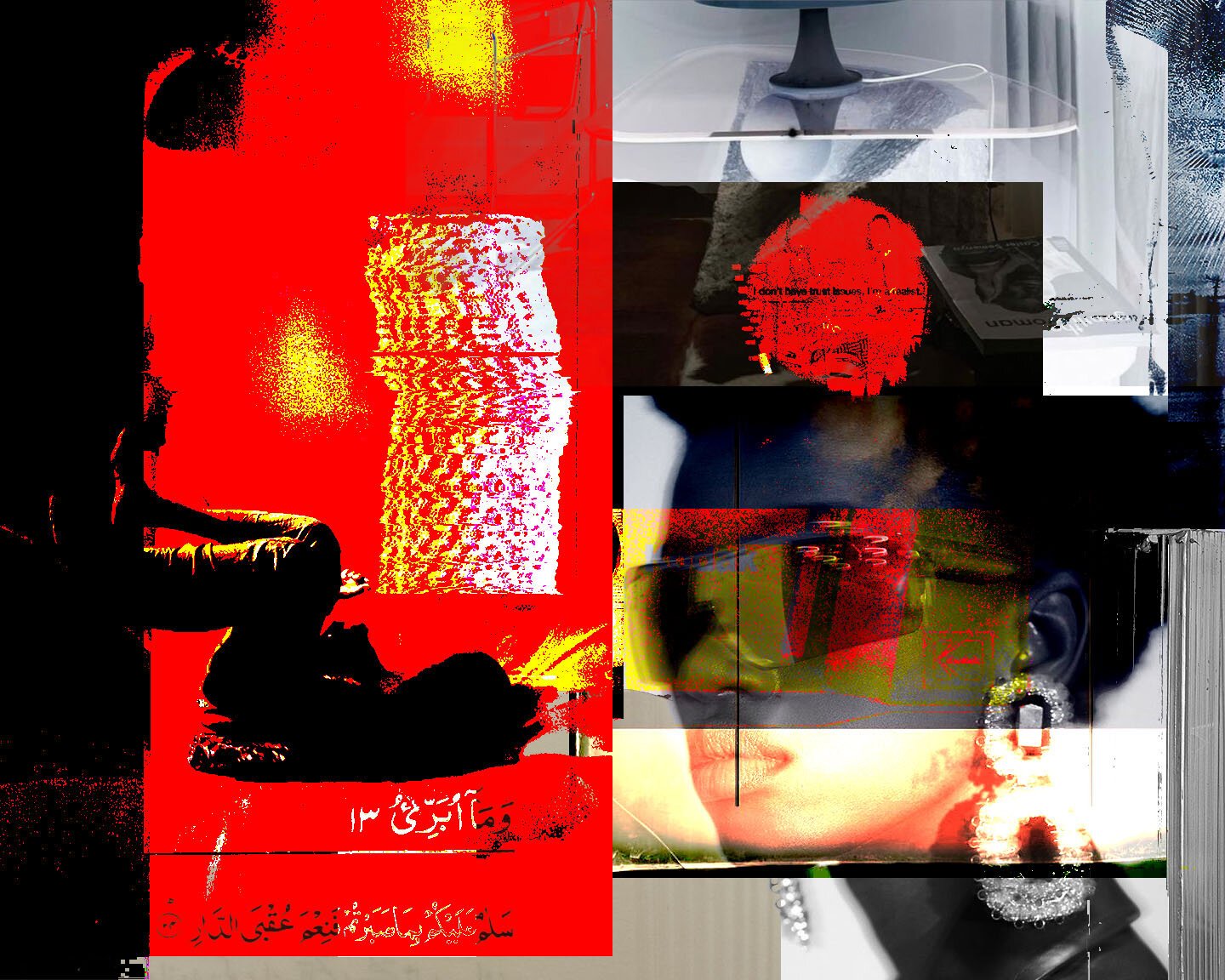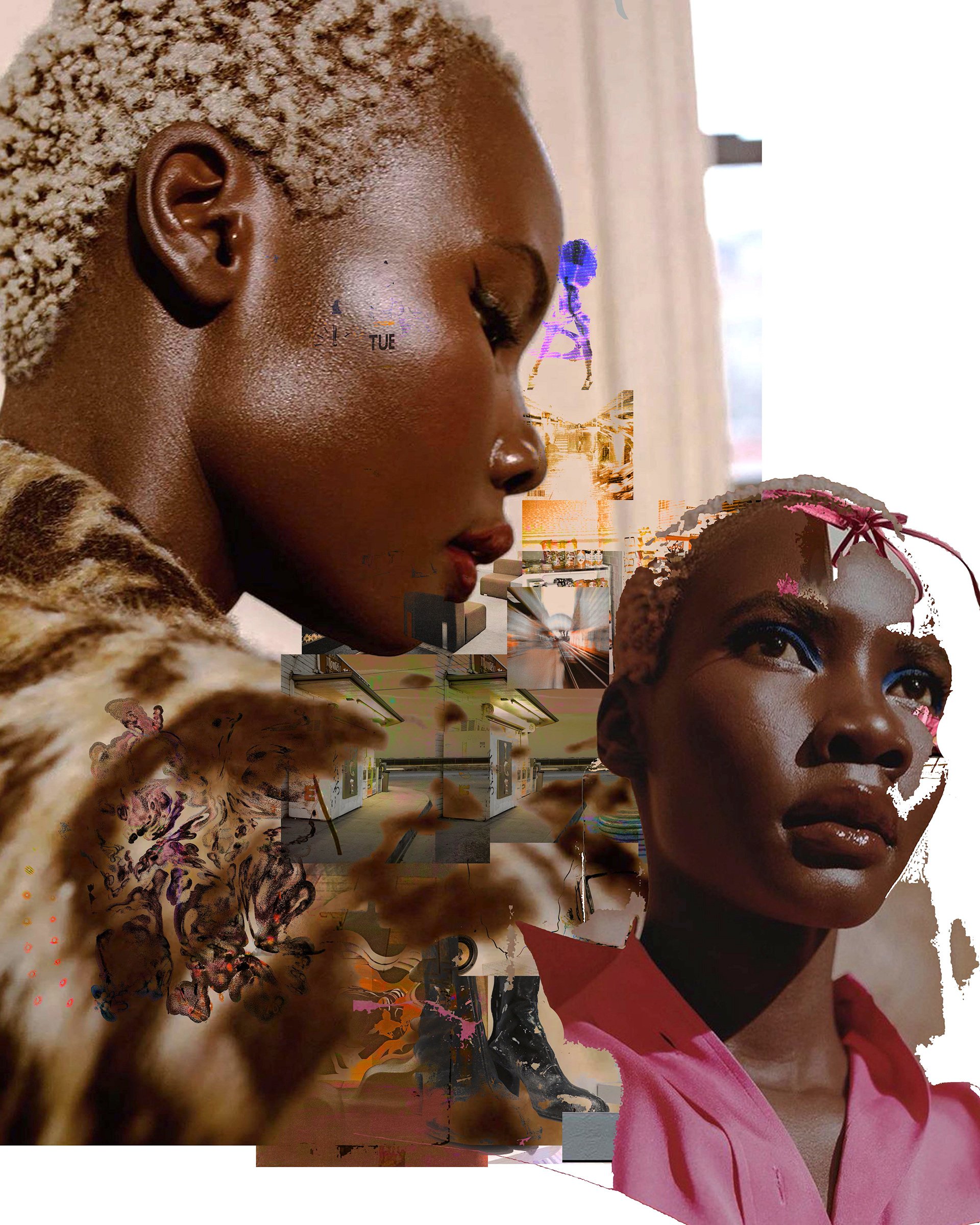Below is an interview both Sehrish Hussain and Madison King had with artist Suliman Abdullah. They speak about how one’s history and culture can influence and grow a love for art. Read below for the exciting conversation around topics of art, community, and black history inspired by Juneteenth. A note both Sehrish and Madison wanted to share is the importance of black artists and creatives uplifted in prominent culture-led organizations like galleries and museums. As Gallery Associates, Sehrish and Madison are proud to be working at the Studio Gallery, which showcases black artists like Suliman.
IT'S ME SELF PORTRAIT 2020, Suliman Abdullah
Q: We were looking at your artist page and it says that you’re from Washington, D.C. We were just wondering how it was growing up here and how you liked or didn’t like it?
A: Yeah, born and raised in Southeast D.C. by Fort Dupont. I grew up down the street from the skating rink so I spent most of my days between doing summer camps and going out to the skating rink. You know, it’s got its rough areas and its palliative outlets. So, I’ve always had this identity like I'm not from D.C., but I'm from D.C.; you see the changes over time, but you appreciate it. I was born and raised in D.C. and I’m still here; you can see the history and the people, and everything like that.
Q: Going off of the history you were talking about, since Juneteenth is coming up and it is widely acknowledged in D.C., how has your knowledge of Black D.C. history influenced your photography and/or your community outreach?
A: When I do portraits, I mainly shoot people of color and those of diverse backgrounds. It's really being with the community and understanding how things are in the city and where to go, like Anacostia park is a nice area and a predominantly black part. Going down there and taking pictures influences me, especially during Juneteenth when there are a lot of cookouts.
Q: How about other major holidays celebrated in D.C.? Can you elaborate on how your background and environment influence your work?
A: Just being a black artist from my perspective and what I view, see, and experience growing up. I try to showcase that through my art, and try to do it in a way that isn't overbearing or down your throat. From an artist’s standpoint I try to show that through my art. I have this one piece; it's in my portfolio… it's orange and black with some Arabic with a Black person sinking, falling. That showcases my background with being Muslim, and shows how I try to use my culture in my art.
Yala, Suliman Abdullah
Akello, Suliman Abdullah
Q: How did you start to expand your photography with collages?
A: I'm really not a great painter or the best at drawing. I like textures and colors and I’m always playing with layering and seeing stuff build on top of each other. I took this interdisciplinary art class trying to do mixed-media, and I came across the medium of photo collage. I took what's preferable from painting and drawing, so that helped me experiment with photoshop and try to put layers and layers together from photos I’ve taken in the past. I try to make the image cohesive so it doesn't seem like a collage and it meshes well together.
Q: Do you have a specific process that you use to come to a final piece?
A: I start with a base, being inspired, going in nature…I think I coined the phrase- I’d like to think I did- called “atmosphere art”, kind of like certain music or movies I see or conversations that I have with people; I go from that. It could be a flower, and from there I'm listening to certain music, and I build off of that mood I get in. It's hard to put into words what I do.
BEACH FRONT CONCEPTUAL VIEWS, Suliman Abdullah
Q: As a photographer, do you have a sense of community with other photographers or any sense of comparison with your work? Or is it a lot of individual work, a sense of isolation?
A: It's a complicated relationship with photographing people. I've been on hiatus since the pandemic. Before then it was really hard to acquire a model- different personalities, expectations. So I've run into problems, making sure about contracts, release forms. I think for me, I want to do more than just take a portrait. People don't really want you to mess with their image. So I've been into shooting myself or trying to find like-minded artists and models who want to work and collaborate. The community of photographers in D.C. is kind to every person for themselves and when you make it big or try to do something you step on people’s toes. I tried to throw a photo meetup but it wasn't that successful, but I had one or two people. I'm passionate about teaching. I got my masters in teaching, so I try to help people who want to learn and who are willing to accept my help. I try to bridge the gap.
Q: How was photography something you wanted to pursue? You had a knack for it but was there a defining moment?
A: Later, probably when I was in college- Nova Community College. Recently I just realized, thanks to my mother, that I did tap dance, went to art camps, etc. I never knew that this was a part of me. My whole thing was Olympic skating. But yeah at Nova Community college I decided I wasn't going to pursue school, I didn't know what I wanted to do so I took a photography course at Nova; it was fun and it didn't feel like I was in school. I took another course after that and transferred to UDC and they had a small photo department, and my professor- he's actually an artist- pushed me to pursue the Studio Gallery. From there I just never looked back.
Sehrish: Awesome! It’s really great that you found your calling a little later on, but even then still latched on. Sometimes it can be hard to find something you're interested and passionate about and see it play out long term.
Suliman: Yeah and I wasn't the best photographer. He was like: “you need glasses; your photos are blurry”. I went to get my eyes checked and found out I needed glasses.
Madison: You were mentioning how your school and community played an integral role in keeping art in your life. I think that this exposure really ended up playing a big role in your decision to pursue photography. Also, your love of teaching brings the story full circle as you are now working to create and expose people to the art form of photography and by extension, themselves and their surroundings.
By staff contributors Madison and Sehrish.







